Men’s Soccer
U SPORTS fall digital broadcasts set viewership records
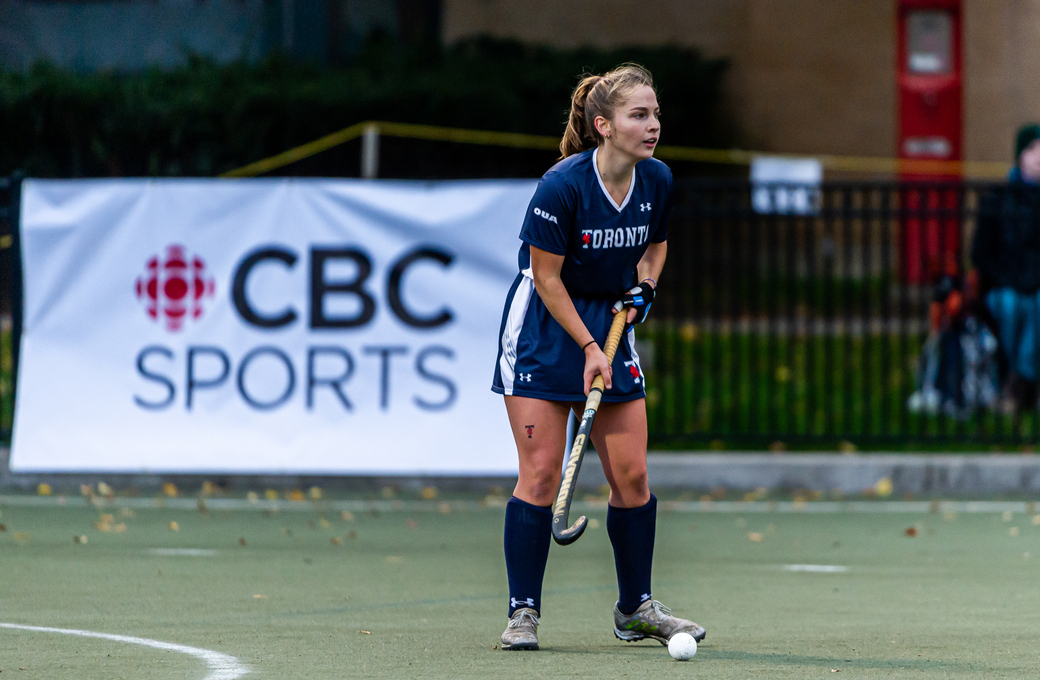

Ben Steiner, 49 Sports
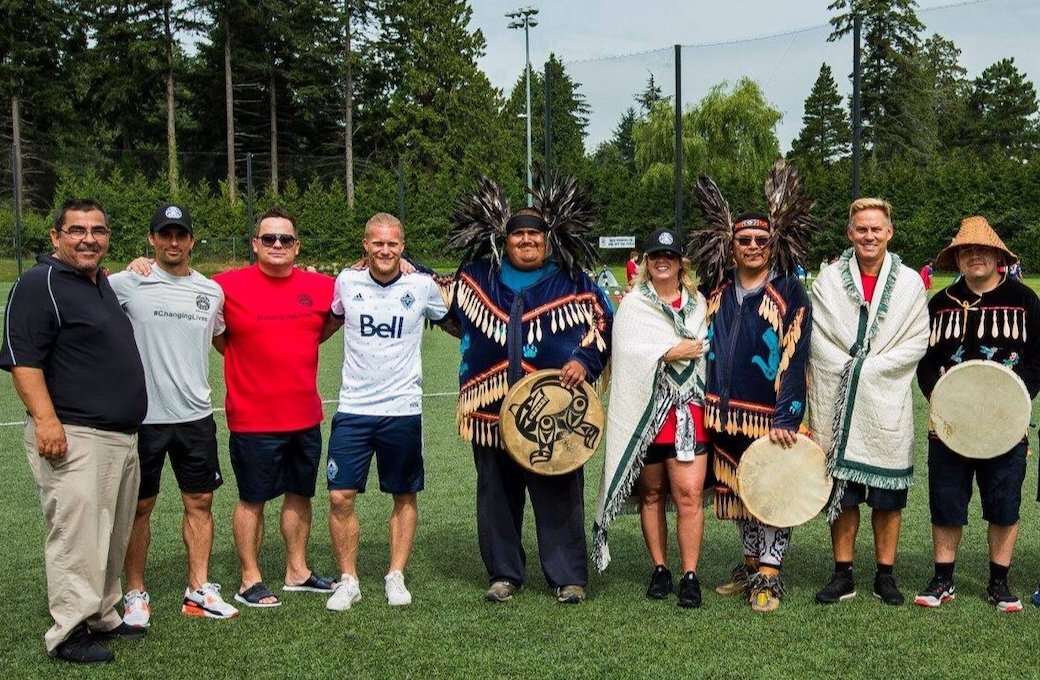
(Courtesy: 49 Sports)
Bill Yoachim, Deanna Gill-Georgica and Ed Georgica sat at a Christmas party in 2010. Drinks in hand, the three began chatting. The three had recently become connected. Gill-Georgica, a consultant by trade, had taken on work for Yoachim’s Kw’umut Lelum Family and Child Services Agency, a child protective service agency headquartered in Nanaimo, BC.
Ed had recently joined the Vancouver Whitecaps of Major League Soccer as their Director of Soccer Operations after spending decades in professional hockey. With their three minds, they saw a chance to make a difference on Canada’s west coast.
Enter Hope and Health. At one point, just an idea, now a soccer program benefitting thousands of Indigenous children.
“Soccer has been very prominent in our Coast Salish communities for over 100 years. Ed, myself and Deana were talking and wondering about a way to utilize the relationship with the Whitecaps, and my role as executive director of Kw’umut Lelum, and we came up with the vision and concept of Hope and Health.”
Bill Yoachim
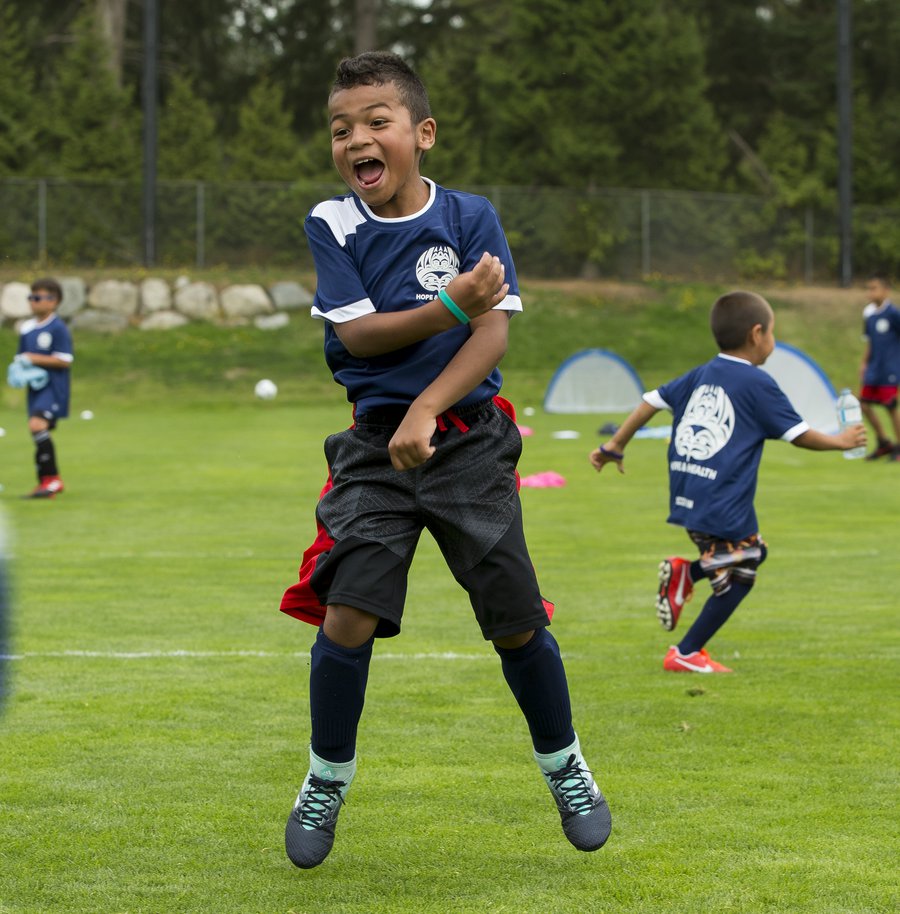
According to the Ministry of Child and Family Development, in British Columbia, 43.8 out of every 1,000 children in foster care are from Indigenous communities compared to just 2.8 out of 1,000 who are non-Indigenous. This is in a province where only 8 percent of children identify as Indigenous.
Through the Hope and Health program, Indigenous children are given an outlet in sport to refocus and dream big, something they might not be able to do in their home environments.
“Each week, it’s not just attending a coaching session, some of these kids haven’t been in sports, and some have not so great home lives, so when we come, it’s not just about soccer,” said Sophie Damian, a lead Hope and Health coach and UBC Thunderbirds student-athlete with the school’s women’s soccer team.
Indigenous communities across Canada have not had an easy time. From 1831 to 1996, the Christian church system, and the Canadian government, stormed into Indigenous communities and stole over 15,000 children from their families, bringing them to residential schools with the goal of ‘erasing the Indian from them.’
The residential school system killed thousands of Indigenous children and tore away generations of traditions and languages. With every community in Canada impacted by the system, many surviving Indigenous people turned to drugs, alcohol and other unhealthy ways to cope with the trauma.
“The whole goal of Hope and Health is to change that cycle. All the effects of Kw’umut Lelum and the social issues in our Indigenous communities stem from colonization, the Indian Act and the residential school system,” said Yoachim. “What’s happened as it snowballed through generations with the loss of cultural teachings, and the things that we may find simple, there are traumas of abuse that so many carry to adulthood.”
Physical activity had a place in the residential school systems, but not in a way that garnered a love for sport. Some children played Ice Hockey, seen as a “white Canadian sport,” as part of their physical activity while at the institutions.
The use of hockey, however, was part of the assimilation strategy. Instead of opting for an Aboriginally rooted sport such as lacrosse, or one that communities had adopted, like soccer, the residential school system opted for hockey. Still, the sport offered respite for some of the boys who took part.
Willie Littlechild spent 14 years at Ermineskin Indian Residential School, which operated from 1916 and 1973. "Hockey was the one bright light of a positive experience for many students," he told CBC in 2014. “I could have been found dead on the street in Edmonton on skid row because of alcohol. So, it's really that strong for me, the influence of hockey in my life.”
Sport offered a small light in a dark place, despite its use for assimilation. In 2010, Gill-Georgica and Yoachim saw the power of sport differently and its ability to help Indigenous communities grow into the future and the next generations.
“The main point of Hope and Health is to change the inter-generational traumas and how people get through those traumas,” explained Yoachim from his home in Nanaimo, BC. “Hope and Health is hopefully going to provide the tools that an individual may need in their journey if they ever come across a point where they’re maybe not in a great place.”
Bill Yoachim
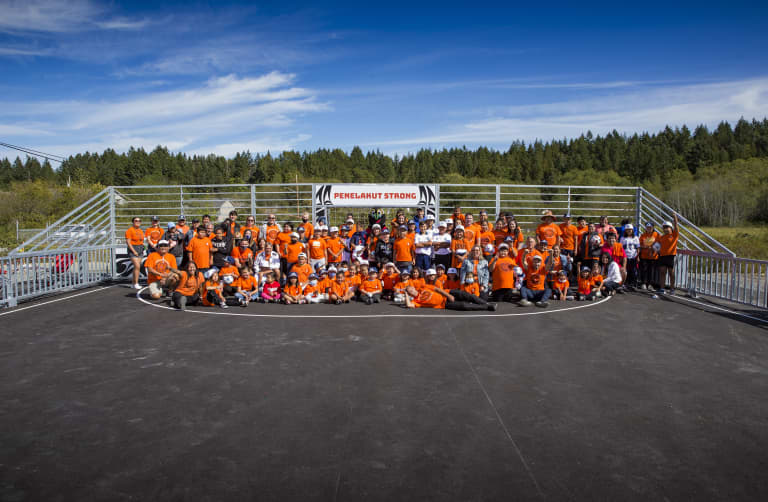
In 2011, with the vision from the Christmas party, the idea became a reality. Amid the Vancouver Whitecaps inaugural Major League Soccer season, the club and Kw’umut Lelum hosted the first Hope and Health event in Nanaimo, with coaches, players from the province’s lone professional soccer team, and local children.
Led by James Merriman, then a coach with the Whitecaps, and now an assistant coach with newfound Canadian Premier League club, Pacific FC, the session ran with a small yet encouraging group of young Indigenous children from around Vancouver Island.
From humble beginnings on the Island with an annual event, Hope and Health looked to how it could grow, not only on Vancouver Island but also on the mainland and eventually across the province. After several years of running the annual event, the co-founders expanded across the Salish Sea.
In 2015, Merriman, still with the Whitecaps, reached out to UBC Women’s Soccer Head Coach Jesse Symons to help out with the program. The two knew each other from Symons’ days in the Whitecaps women’s programs, where he spent ten years before joining the University of British Columbia.
“He brought me on in 2015, and we’ve really seen it grow since then,” said Symons, now the Head Coach and Program Director with Hope and Health in addition to his UBC duties. “It’s grown to break down and connect people from different regions and areas, which I think is huge. It takes out all the politics and focuses more on the kids.”
Jesse Symons
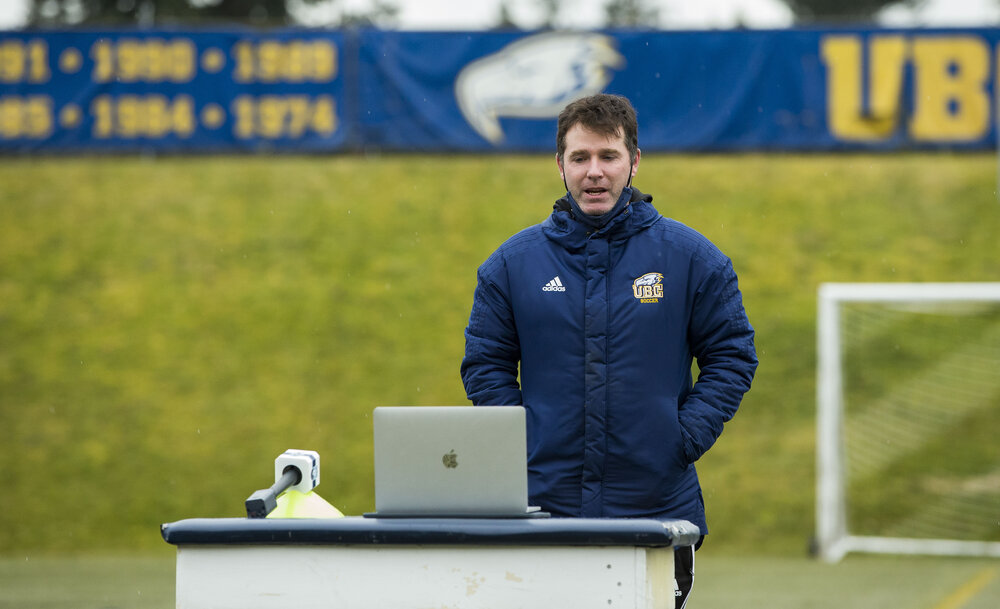
Symons walked up the soccer field on the Musqueam reserve in Vancouver one April morning in 2015 and saw dozens of young Indigenous children awaiting him and the other coaches for the session. With a few of his UBC student-athletes in tow, they began to work with these young kids for the first time.
“It was life-changing. It’s a place to give the opportunity to Indigenous children to be active and to be given the same opportunities,” said Symons. “Watching the UBC players working with all the children made me realize we had to do this more and the opportunity to put our students in a place to be leaders and role models.”
As Hope and Health has continued to grow, Symons and many student-athletes help with the programs in BC’s Lower Mainland and make trips up through the Salish Sea to lead sessions in communities farther away from Thunderbird Stadium.
While the professional support of the Vancouver Whitecaps from the beginning means a lot to Yoachim and Hope and Health’s mission, having the universities on their side is a statement to the way Canada is growing in the wake of the residential school system.
“When the academic institutes, such as Vancouver Island University and UBC are recognizing, respecting and giving back to Hope and Health and seeing the bigger vision, it makes me feel, as a Canadian, that we are moving in the right direction,” he said. “The presidents of the universities should be proud of what these student-athletes are doing. They’re role models; they’re bridging communities through sport and their teachings.”
Heading into 2022, there are weekly Hope and Health programs for children across BC. While an annual event featuring more prominent players of the province’s professional teams still takes place, student-athletes and regular coaches drive the full-time program, week in and week out, in any conditions.
With the Whitecaps participation, the likes of Canadian men’s national team players Alphonso Davies, Maxime Crepeau and Russell Teibert have all lent themselves to Hope and Health.
“When I was little, I did a camp like this with the FC Edmonton guys coming through. At the time, I was a little kid wanting to be where they were,” Davies told media in 2018. “These are very special kids, and they are coming through, playing this sport; it’s a big eye-opener.”
In 2021, Davies is a world star with German superclub Bayern Munich and is on the verge of leading Canada to its first FIFA World Cup berth since 1986.
Sophie Damian remembers playing with a little girl on the sidelines. Seven years old, the girl was unhappy with the soccer session, but her mood brightened when Damian took her aside, spoke with her, and gave her a crystal necklace that she was wearing.
A few moments later, the girl’s smile beamed, light flickering off the crystal, as she dribbled the ball among the other campers.
“A lot of them aren’t in organized sports, so being on a team instead of doing something individually, especially with their community, is awesome. I think they’re really learning how to set goals and dream big, and that is the big goal of Hope and Health.”
Sophie Damian
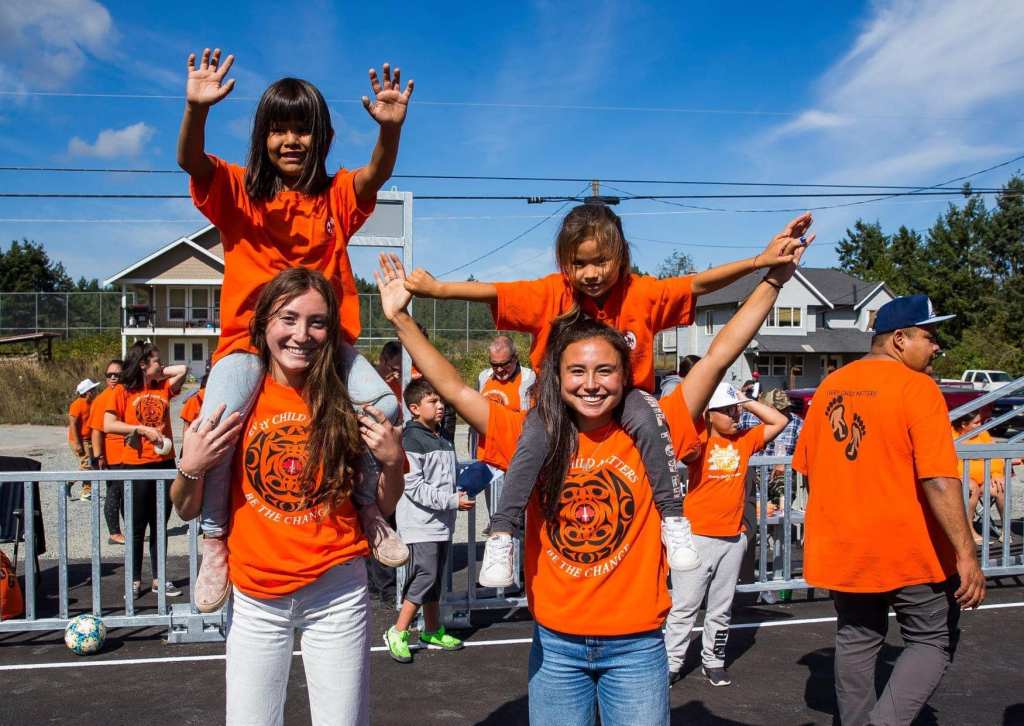
Damian started with Hope and Health at the first chance she could when she began her arts degree at UBC and kicked off with the Thunderbirds women’s soccer team. “Jesse [Symons] reaches out to our team at the start of the season and asks us if we are interested in working with Hope and Health.”
Throughout her years with the program, Damian has created connections with hundreds of children in the Vancouver area where she grew up and along Canada’s west coast, leading sessions on Vancouver Island, Penelakut Island, and several other communities.
“Sophie has been huge with the program; we got to the point where even though I am the Head Coach, we let our players run two days each week in the weekly programs,” said Symons.
“She took everything upon herself with the Tsleil-Waututh Nation, and she also helped with an after-school program. So she’s really progressed through Hope and Health.”
Always smiling, Damian opens the Hope and Health session, welcoming in every camper before starting an opening, bringing the camper’s focus to mindfulness exercises. “You close your eyes and focus on yourself and who you want to be when you’re playing soccer,” she says.
Just before the kids start with the session, everyone gets together and shouts, “I am a champion!” While there is no trophy to win, the idea of being a champion powers the session; it’s something Damian sees value in and that passion makes its way to the children.
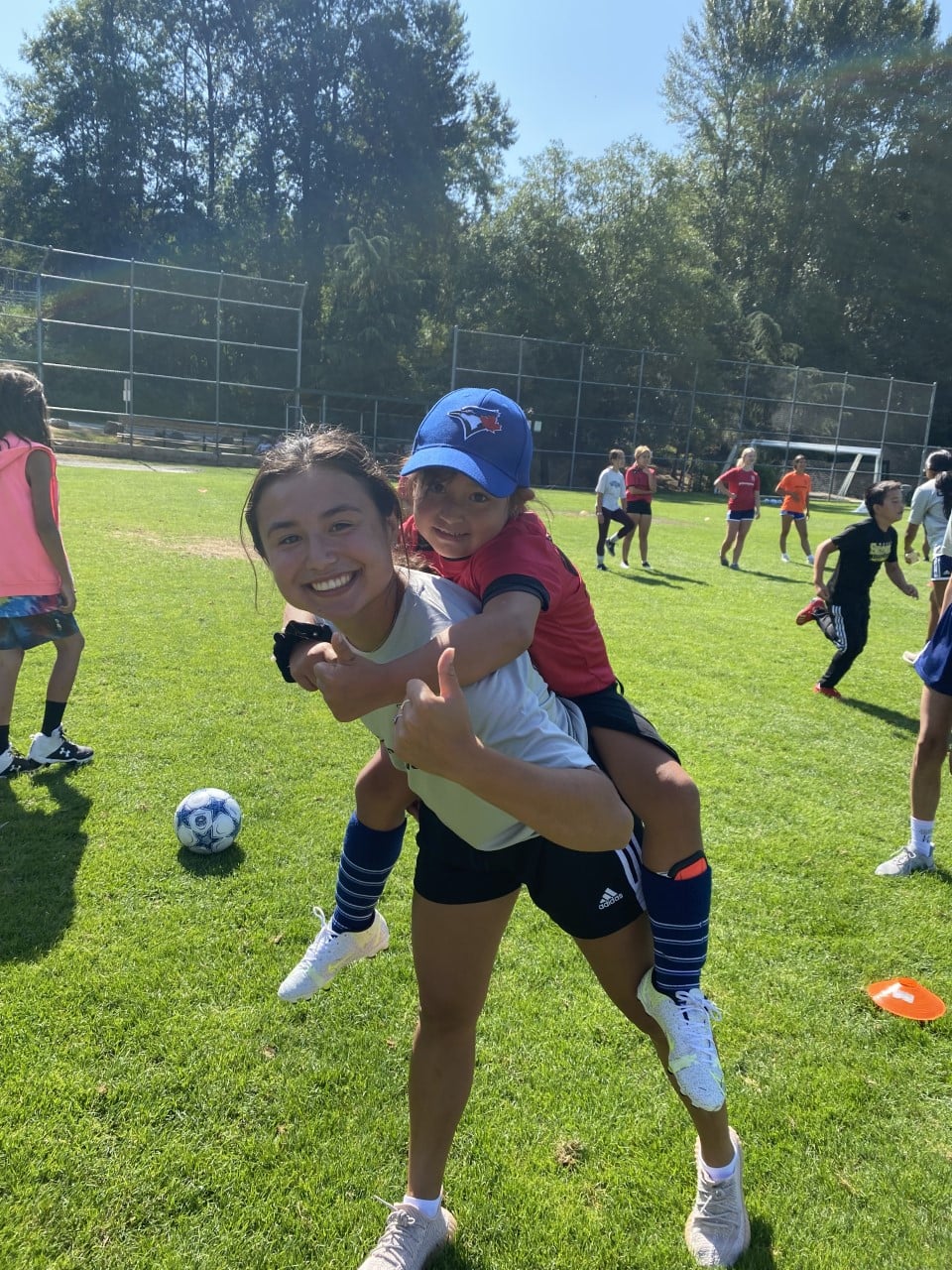
“After that, it’s basically a normal soccer practice, with a few more fun activities,” says then fourth-year UBC student-athlete. However, it’s anything but average. Every time, it is a small step that empowers and inspires Indigenous youth to continue chasing their goals and dreams.
“The kids are so amazing; they are so open to getting feedback on what they don’t know how to do and what they can do. They are super welcoming and just very nice kids,” Damian said. “Every kid has their eyes glued to you, and it's a great environment to be in because you get familiar with the kids.”
Now, with newfound confidence, the eight-year-old girl wearing the crystal necklace has a dream to play soccer and has told Damian her dreams of playing at an elite university level when she grows up.
For Yoachim, the little girl looking towards education and soccer sums up Hope and Health’s central goal. Remembering some of the young campers at the first few sessions a decade ago, he has seen how the program has developed young men and women in sport and life.
“There are several of those kids from the first camps who are young adults now, and they are going to university or looking at university, and I like to think that Hope and Health played a role in that,” he said. While some former campers are moving onto university and other chapters in their lives, many have returned to the program to give back.
“The amazing thing is the UBC and VIU coaches have welcomed in Hope and Health Grads, so they are back in their communities and have learned from world-class student-athletes, and are giving back and filling the gap that was there before.”
Symons sets up a laptop on UBC’s campus; minutes later, hundreds of children from British Columbia log on and follow along with UBC Women’s Soccer student-athletes in a virtual session. It is 2020, and in-person sessions aren’t possible, but Hope and Health found a way to excel.
Sophia Ferriera had not trained or played with the UBC Thunderbirds when she started with Hope and Health. A 12th-grade student from Coquitlam, BC at the time, she had committed to the Thunderbirds but had not yet started. Still, she saw the value in Hope and Health when Symons mentioned it.
Standing in front of a laptop with a ball at her feet, Ferriera led her first sessions with Hope and Health over Zoom. “I wasn’t even playing soccer at the time, so to be able to do it through Zoom and still be able to coach, have fun with kids and bring sport to kids who don’t really get it was a big moving point,” she said.
Leading soccer on a video call is not the same as in person. While Hope and Health could welcome children from across the province into a session, it was far from running around a field with other kids.
Coaches, including Ferriera, could not just rely on their movement and skills through a session. Instead, talking and describing what they were doing was critical, a significant change for Ferreira, who had been coaching since she was 12-years-old.
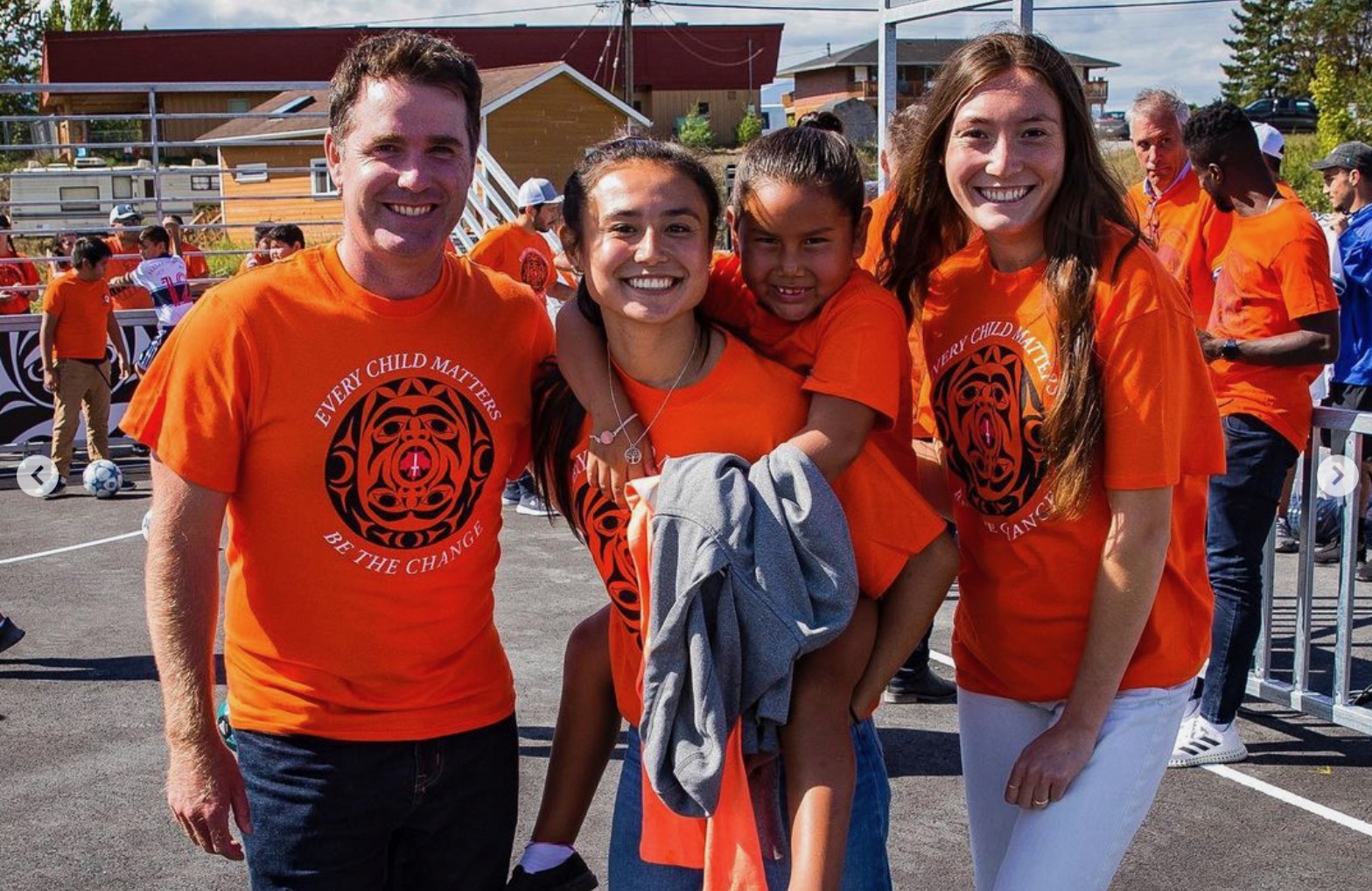
“The pandemic really helped progress things because, with nothing really available for the kids to go and do, we went online and did a whole bunch of activities for children all over the province,” said Symons. “I think it has really progressed over the last two years.”
Coming out of the pandemic, Hope and Health has harnessed its virtual growth and transitioned it back into a world adjusting to the new normal and a county that has woken up to the atrocities committed against Indigenous communities.
In July 2021, over 160 children’s bodies were found in unmarked graves on Penelakut Island (formerly Kuper Island), a small coastal community with 300 permanent residents, many from the Penelakut tribe. All 160 children had been murdered at the Kuper Island Indian Residential School, which operated from 1889-1975.
Yoachim, Damian, Symons and many others from Hope and Health travelled to Penelakut Island in September 2021, opening the first Hope and Health mini-pitch, mere kilometres away from the grounds that tried to erase their community.
The Penelakut Strong mini-pitch allows children and families to play soccer whenever they want, benefitting from the Hope and Health mission, even outside of sessions.
“Not to victimize our beautiful people, but what this [2021’s discoveries] has clarified is that the vision of ten years ago to where we are going today,” said Yoachim. “We are seeing healthy family participants, healthy family outings, and the social effects of child welfare are being reduced. I think Hope and Health is a big reason for people making different choices.”
Through their work with Hope and Health, both Yoachim and Symons earned Major League Soccer’s annual Community MVP Award, which has given valuable funding towards Hope and Health.
Over 5,000 Indigenous children and youth have attended Hope and Health Skills and Drills community camps on Vancouver Island and Vancouver mainland, with hundreds more on Zoom and benefitting from the mini-pitch projects.
For Yoachim, the project will not ever be done, but the mission is well on its way through a decade, and he knows it could work in other places. “This Hope and Health model can be dropped anywhere in this country. The model works.”
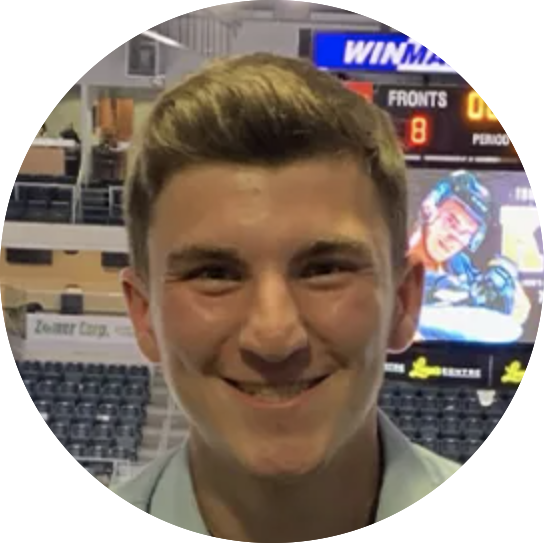
Ben Steiner is a sports journalist and commentator who covers U SPORTS with
49-sport.com, where he is Managing Editor. He has experience covering U SPORTS, FIS World Cup Alpine Skiing, IBSF World Cup Bobsled, and the Canadian National Soccer Teams. After growing up in Vancouver, he is now based in Toronto. Twitter: @BenSteiner00
Men’s Soccer
U SPORTS Staff
